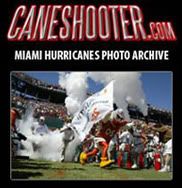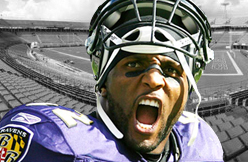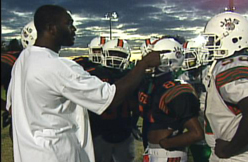The Redskins’ first-round draft choices during the first three seasons of the salary cap era were disasters.
Quarterback Heath Shuler (third overall, 1994) was better at passing bills as a member of Congress than he was at passing footballs. Receiver Michael Westbrook (fourth overall, 1995) was most famous for beating up teammate Stephen Davis during a 1997 practice. And offensive tackle Andre Johnson (30th overall, 1996) was so bad that he never played a snap for Washington.
But with top defensive lineman Sean Gilbert threatening to hold out – which he would do all season — general manager Charley Casserly was smart with the 17th pick in the 1997 draft, choosing Miami defensive end Kenard Lang.
“A lean, mean sacking machine,” Lang said the other day with a chuckle from Orlando where he coaches the football team at Wekiva High.
While Lang was no Hall of Fame cinch like Casserly’s last first-rounder, cornerback Champ Bailey (seventh overall, 1999), he did record 50 sacks during his 10 NFL seasons, the first five of which were in Washington. The Redskins, who had been 31-49 during the five years before Lang’s arrival, were 40-39-1 during his tenure and 33-47 during the five years after his departure for Cleveland as a free agent following the 2001 season.
A reliable performer at tackle and end, upon signing with the Browns, Lang was described by ESPN.com’s Len Pasquarelli as “one of the most sought-after players” on the market. And although he played at “The U” which had some less than sterling characters, Lang was always a solid citizen, which foreshadowed his move from wearing cleats to leading young men.
“Coaching was in my blood because my dad [Calvin] coached [high school] basketball and football, but I didn’t really think about it until near the end of my career,” said Lang, whose brother, uncle and cousin have also coached in Florida high schools and colleges. “If we had a young guy come in, my [position] coaches Andre Patterson and Jacob Burney [now with Washington] would put him in my hands. For my coaches to trust me like that to do the right thing, that was the ultimate respect. And I always loved kids so I knew I could be a coach.”
Lang began his coaching career as an assistant at Edgewater High in his native Orlando in 2007, the same year that he finished his sociology degree. He became the head coach across town at Jones High the next year. The Tigers, who had been 1-9 in 2007, were 30-25 under Lang with four playoff appearances. And now he takes on another major challenge at Wekiva, which was 1-9 last season and is 18-43 during its six-year history.
“I like teaching kids the fundamentals of football, the joy of making your parents proud of you for doing the right thing and what life is really about,” said Lang, who has also worked in vocational education and as an adviser to troubled students.
Like tight end Jordan Reed, whom Washington selected in the third round last week, Lang didn’t expect to be selected by the Redskins 16 years ago, but he’s glad that he was. And he has some advice for cornerback David Amerson, Washington’s top choice.
“If I recall right, the teams that had talked to me the most were the Jets, the Giants, Cincinnati and Baltimore so when the Redskins picked me, I was kinda surprised, but I was happy,” Lang said. “I expected to go in the first round, but I didn’t worry about being a first-round pick. I could have been a free agent or a first-rounder, I still would’ve put the same amount of pressure on myself to do the right thing.”
The first major right thing that Lang did on the field for the Redskins was when he teamed with linebacker Marvcus Patton to force a fumble in overtime in the 1997 home opener.
“My favorite memory in Washington is when we won our first home game in the new stadium against Arizona,” said Lang, who keeps in touch with ex-teammates Shawn Barber, Marco Coleman and N.D. Kalu. “We went to overtime, they fumbled and Gus [Frerotte] threw a touchdown to Michael Westbrook. I liked playing in Washington. I just wish I could’ve finished my career there. I guess ownership didn’t want me. What they offered me [as a free agent] was nowhere close to what other teams offered me.”
But if Lang hadn’t gone to Cleveland, he wouldn’t have met his wife Meredith, a boot camp instructor, nor had their daughters Aubrey, 4, and Mia, 2.
And for all he has accomplished on the field including starting all 16 games during his final NFL season in Denver under current Redskins coach Mike Shanahan, Lang is more proud of having gone back to school to earn his degree 10 years after he left.
“It was kind of difficult getting back in the swing of things for the first month, but after that, it was like riding a bicycle,” said the 38-year-old Lang, who hasn’t worn a uniform in more than six years although he’s just four months older than current Redskins captain London Fletcher. “Physically, I can’t play football any more, but the degree I’ll have for life.”

(cbs.local.com)







